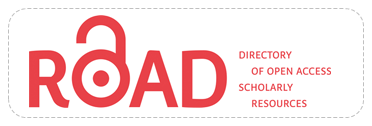KECENDERUNGAN PERILAKU CYBERBULLYING PESERTA DIDIK BERDASARKAN JENIS KELAMIN
Abstract
Abstrak
Penelitian dilatarbelakangi oleh mudahnya penggunaan komunikasi secara online yang dapat menimbulkan perilaku cyberbullying di kalangan remaja. Penelitian bertujuan menghasilkan data empirik mengenai kecenderungan perilaku cyberbullying yang dilakukan peserta didik Kelas VIII di salah satu SMP di Kota Bandung Tahun Ajaran 2017/2018. Pendekatan penelitian yang digunakan adalah kuantitatif dengan metode penelitian deskriptif dan desain penelitian survei. Hasil penelitian menunjukkan: 1) kecenderungan perilaku cyberbullying peserta didik Kelas VIII berada pada intensitas rendah sekali baik secara keseluruhan maupun berdasarkan bentuk; 2) kecenderungan perilaku cyberbullying berdasarkan jenis kelamin pada peserta didik kelas VIII berada pada intensitas rendah sekali pada setiap bentuk yang ada, namun terdapat dua bentuk yang memiliki intensitas tinggi yakni cyberstalking dan exclusion.
Abstract
The ease of utilizing technology and the shifting pattern of communication from face to face to online make adolescents one of the most vulnerable communities to the negative impact of technology. One of the negative effects of technology and online communication is the emergence of cyberbullying behavior among teenagers. There is a different attitude and intensity between boys and girls in cyberbullying events. The study aimed to produce empirical data regarding the tendency of cyberbullying behavior based on gender by Class VIII students in one of the junior high schools in Bandung City Academic Year 2017/2018. The research approach used is quantitative with descriptive research methods and survey research designs. The results of the study show: 1) the tendency of cyberbullying behavior of Class VIII students to be at very low intensity both overall and based on form; 2) the tendency of cyberbullying behavior based on gender in Class VIII students is at very low intensity in each form, but there are two forms of behavior that have high intensity, namely cyberstalking and exclusion.
Keywords
Full Text:
PDF (Bahasa Indonesia)References
Alfriyanti, Ayu. (2016). Hubungan antara Regulasi Emosi dan Perilaku Cyberbullying. (Skripsi). Fakultas Ilmu Pendidikan Universitas Pendidikan Indonesia, Bandung.
AASA (American Association of School Administrator). (2009). Bullying at School and Online. California: Education.com Holding, Inc.
Banks, R. (1997). Bullying in School. (Online). Diakses pada 31 Mei 2018.http://www.eric.ed/educational_researchjournal_article/downloads.pdf .
Baron, Robert A. & Byrne, Donn. (2004). Psikologi Sosial. Jakarta: Erlangga.
Budiarti, Arsa Ilmi. (2016). Pengaruh Interaksi dalam Peer Group terhadap Perilaku Cyberbullying Siswa. Jurnal Pemikiran Sosiologi 3(1), 1-15.
Dagun M. Save. (1992). Maskulin dan Feminine. Jakarta: Rineka Cipta.
Dehue, Francine. et.al. (2008). Cyberbullying: Youngsters’ Experiences and Parental Perception. Cyberpsychology & Behavior, 11(2), 217-233. doi: 10.1089/cpb.2007.0008
Haryati. (2014). Cyberbullying Sisi Lain Dampak Negatif Internet. Mediakom, (11), 46-63.
Hinduja, Sameer & Patchin, Justin W. (2006). Bullies Move Beyond The Schoolyard A Preliminary Look at Cyberbullying. Youth Violence and Juvenile Justice, (4)2, 148-169. doi: 10.1177/1541204006286288.
Li, Qing. (2006). Cyberbullying in Schools: A Research of Gender Differences. School Psychology International, 27(2), 157-170. doi: 10.1177/0143034306064547.
Maya, Nur. (2015). Fenomena Cyberbullying di Kalangan Pelajar. Jurnal Ilmu Sosial dan Ilmu Politik, (4)3, 443-450.
Pandie, Mira M & Weismann, Ivan. (2016). Pengaruh Cyberbullying di Media Sosial terhadap Perilaku Reaktif Sebagai Pelaku Maupun Sebagai Korban Cyberbullying pada Siswa Kristen SMP Nasional Makassar. Jurnal Jaffray, 14(1). 43-62. doi: 10.252781.188.
Santrock, John W. (2007). Remaja: Edisi Kesebelas. Jakarta: Erlangga.
Sari, Juni Fajar. Dkk. (2014). Hubungan Antara Penyesuaian Diri dengan Kecenderungan Perilaku Cyber Bullying pada Siswa Kelas VIII SMP Labschool Jakarta Tahun Ajaran 2013-2014. [Online] Diakses pada 31 Mei 2018 http://journal.unj.ac.id/unj/index.php/insight/article/download/2289/1772.
Sartana & Afriyeni, Nelia. (2017). Perilaku Perundungan Maya (Cyberbullying) pada Remaja Awal. Jurnal Psikologi Insight (1)1, 25-41. doi:10.5281/zenodo.576972.
Sciarra, D.T. (2004). School Counseling: Foundation and Contemporary Issues. Australia: Brooks/Cole.
Slonje, R. & Smith, P.K. (2008). Cyberbullying: Another Main Type of Bullying?. Scandinavian Journal of Psychology. 49, 147-154. doi: 10.1111/j.1467-9450.2007.00611.x.
Smith, Peter K. et. al. (2006). An investigation into cyberbullying, its forms, awareness, and impact, and the relationship between age and gender in cyberbullying. [Online]. Diakses pada 3 Juni 2016 https://static.lgfl.net/LgflNet/downloads/online-safety/LGfL-OS-Research-Archive-2006-Goldsmiths-Cyberbullying.pdf.
Smith, Peter K. et.al. (2007). Cyberbullying: Its Nature and Impact in Secondary Schools. Journal of Child Psychology and Psychiatry (49)4, 376–38. doi:10.1111/j.1469-7610.2007.01846.x.
UNICEF. (2014). Digital Citizenship Safety among Children and Adolescent in Indonesia. (Online). Diakses pada 7 Desember 2017. http://www.unicef.org/indonesia.
Willard, Nancy. (2005). Cyberbullying and Cyberthreats. Washington: U.S Department of Education.
Willard, Nancy. (2007). Student Needs Assessment Survey. [Online] Diakses pada 7 Desember 2017 http://preventcyberbullies.weebly.com/uploads/1/0/6/7/10674596/studsurvey.pdf.
Yusuf, Syamsu. (2015). Psikologi Perkembangan Anak dan Remaja. Bandung: PT Remaja Rosdakarya.
DOI: https://doi.org/10.17509/pdgia.v16i3.13553
Refbacks
- There are currently no refbacks.
INDEXED BY

This work is licensed under a Creative Commons Attribution-ShareAlike 4.0 International License















